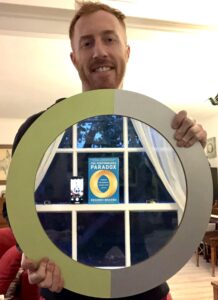 When we are young, we are learning everything about everything. As we begin to understand the world around us, we subtly transition from learning into living. This is the same process we follow when learning any new skill: first we learn via practicing, then we perform. The problem many of us encounter is that once we begin performing, our abilities plateau, and our performance ultimately suffers. Our author argues that this is because we abandon learning and practice. In order to continually be our best, whether in the arts, sports, or business, we must “engage in two distinct but equally powerful states of mind: the Learning Zone and the Performance Zone.”
When we are young, we are learning everything about everything. As we begin to understand the world around us, we subtly transition from learning into living. This is the same process we follow when learning any new skill: first we learn via practicing, then we perform. The problem many of us encounter is that once we begin performing, our abilities plateau, and our performance ultimately suffers. Our author argues that this is because we abandon learning and practice. In order to continually be our best, whether in the arts, sports, or business, we must “engage in two distinct but equally powerful states of mind: the Learning Zone and the Performance Zone.”
This book draws a lot of inspiration from Carol Dweck’s book Mindset, which is about fostering a growth mindset. Growth mindset is the belief that we can grow and change our abilities through dedication and hard work. It proposes that nobody is stuck where they are—we can all grow and change if we challenge ourselves—and the best way to do this is deliberate practice in the areas where we lack desired skills.
Believe it or not, there are good and bad ways to learn and practice. When asked about practicing, Legendary violinist Leopold Auer once said that “it really doesn’t matter how long. If you practice with your fingers, no amount is enough. If you practice with your head, two hours is plenty.” One of the traps that many of us fall into is practicing elements of our craft that we are already good at. This, again, is not proper practice. In order to be our best we should be challenging ourselves to practice difficult or brand new skills that we can then add to our repertoire. This Learning Zone is one half of the performance paradox.
The other half is the performance part, which many of us get stuck in once we have achieved a certain level of competence. “I already know how to give a presentation,” we might think. “Why would I practice something I already know?” Well, why do professional athletes still have practices in between matches or competitions? Because there are always areas for improvement if we look for them, and simply relying on our performance to expose where the weak areas are often does not uncover them. Sometimes, we can learn while doing (as opposed to learn by doing, a term which our author rejects). This can happen when we make a mistake during a performance which we revisit later to diagnose what went wrong and correct it. Stand-up comedians do this when they test new jokes in front of an audience and gauge the response. Generally, however, it is best to dedicate learning and practice time for making mistakes (because “mistakes are fundamental to continuous improvement”) and when we are in the performance zone, we should focus on doing our best.
When we take this concept from the individual to the collective, it is still applicable: teams need to foster learning environments as well in order to continually improve. One of the most important aspects of being on a team with a growth mindset is eliciting feedback from other group members. We must have the humility to ask where they believe we can improve our work, and we must likewise be truthful with our feedback of others. Fostering a work environment that is supportive of feedback and does not perceive it as negative or attacking is of paramount importance.
As recent research cited in this book shows, engaging in continual learning is tremendously beneficial. “We gain a sense of wonder and awe from our explorations and discoveries; a decrease in anxiety from knowing that we can overcome challenges; personal satisfaction from the growth of our skills and contributions; and greater happiness and well-being as we learn to brush off hiccups and deepen relationships.” The lesson is simple: No matter how good we get at any skill, continuing to make time for practice and learning is key to always performing our best.


